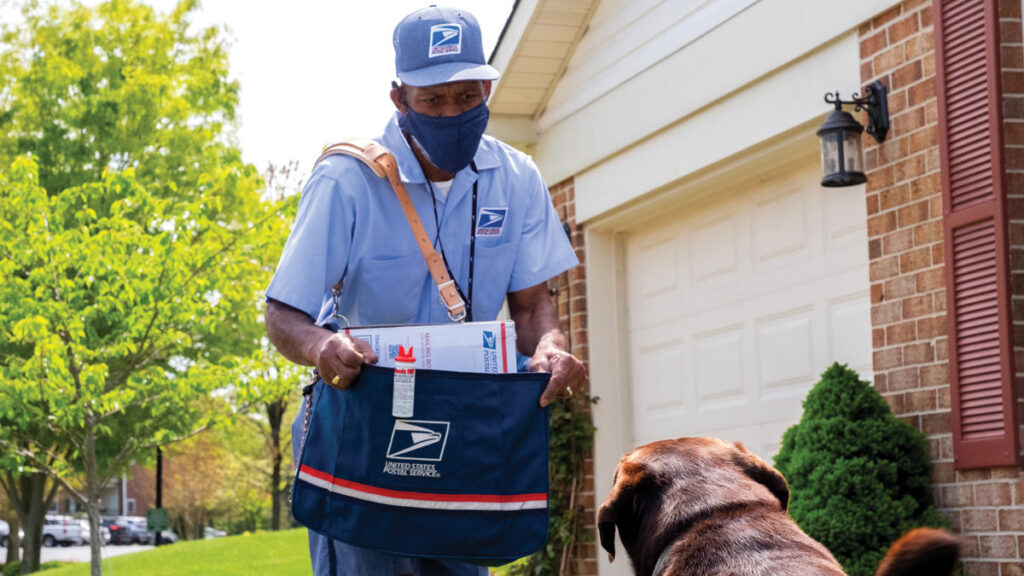Introduction
Lone workers often face unique safety challenges, especially when interacting with animals like dogs. Whether delivering packages, conducting home services, or simply passing through an area, the threat of an unexpected dog encounter can be unnerving. Understanding how to prevent dog bites and stay safe while alone is crucial for those working in roles where they’re often by themselves. This article will walk you through essential dog bite prevention strategies, providing helpful tips to navigate potentially risky encounters.
Understanding the Risks for Lone Workers
Lone workers whether delivery drivers, utility workers, or real estate agents frequently find themselves in unfamiliar environments. Unlike those who work in teams, they don’t have the immediate support of colleagues, making them more vulnerable in certain situations. Understanding the risks specific to lone workers is the first step in staying safe around dogs.
Why Do Dogs Bite? Key Triggers to Know
Dogs typically bite due to fear, territoriality, or pain. Knowing the common triggers can help you read a dog’s intentions. For instance, if a dog feels threatened by a stranger on its property, it may respond aggressively. Dogs might also bite when they are in pain or frightened, so recognizing these factors can help you avoid risky situations.
Signs a Dog May Be About to Bite
Dogs give off warning signs before they bite, and recognizing these cues can be lifesaving. Look for signals such as:
- Growling or Barking: Indicates a dog feels threatened.
- Baring Teeth: A clear sign of aggression.
- Ears Pinned Back or Fur Standing Up: Shows heightened alertness or fear.
- Stiff Body Language: Often a precursor to a defensive response.
Learning to identify these signs can help you decide when to proceed or retreat.
Safety Precautions Before Entering a Property
Before entering a property with a dog, it’s wise to take some basic precautions:
- Announce Your Presence: Knock or ring the bell rather than walking in unannounced.
- Ask About Pets: If possible, inquire about pets on the premises ahead of time.
- Observe for Fences or Signs: “Beware of Dog” signs are there for a reason, so take them seriously.
By taking these initial steps, you can better prepare for any interactions with a dog.
How to Approach a Home with a Dog
When approaching a home, avoid sudden movements or loud noises that might startle a dog. Try to maintain a calm demeanor and allow the dog to observe you from a distance before proceeding. If the dog is in an enclosed area, resist the urge to reach over the fence or gate.
What to Do if a Dog Approaches Aggressively
If you find yourself in a tense situation with an approaching dog, here’s what to do:
- Stand Still: Sudden movements may trigger a chase instinct.
- Avoid Direct Eye Contact: Dogs interpret direct stares as a threat.
- Use a Calm Voice: Speak in a low, steady tone to signal that you’re not a danger.
Think of yourself as a tree: stable, calm, and non-threatening. This metaphor can be a helpful reminder to maintain composure.
Protective Gear and Tools to Consider
Lone workers can use protective gear, such as:
- Dog Repellent Spray: Use only as a last resort to create distance.
- Protective Gloves: Especially helpful for those handling deliveries.
- Noise-Making Device: Sometimes, a loud noise can discourage an aggressive approach.
Having these items readily available may provide extra safety.
Communication Strategies with Dog Owners
Effective communication with dog owners can prevent many issues. Ask the owner to secure their dog if possible, and don’t hesitate to let them know if you feel uncomfortable around their pet. Establishing clear boundaries ensures that both you and the dog remain safe.
Handling Common Scenarios Lone Workers Face
Lone workers frequently encounter a variety of situations. Here are some practical strategies:
- Entering Enclosed Spaces: Always ensure the dog is contained.
- Approaching Vehicles with Dogs Inside: Avoid close proximity, as dogs may perceive you as a threat.
- Handling Deliveries: Consider leaving packages at a distance if a dog is on the premises.
Adaptability in each scenario is key for staying safe.
Emergency Actions if a Bite Occurs
If a bite occurs, prioritize your safety and health:
- Get to a Safe Location: Move away from the dog calmly.
- Assess the Injury: If bleeding, apply pressure to the wound.
- Seek Medical Attention: Dog bites can carry infections, so get professional help even for minor bites.
Proper post-bite actions are critical to preventing further harm.
Best Practices to Avoid Repeat Incidents
To avoid repeat incidents, consider documenting your experiences and reflecting on what worked. Maintain a log of any aggressive encounters and share your insights with your team or employer. Continuous learning can greatly enhance safety measures for future encounters.
Mental Health Impact of Dog Encounters
Frequent dog encounters, especially those that end in aggressive situations, can impact mental well-being. Recognize signs of anxiety or stress after a traumatic event, and seek support if needed. It’s vital for lone workers to stay both physically and mentally healthy.
Reporting and Documenting Incidents
Reporting incidents to your employer or a local authority helps prevent future issues. Include details about the encounter, such as the dog’s behavior and any actions you took. This documentation may help other workers who visit the same area or client in the future.
Conclusion and Key Takeaways
Staying safe as a lone worker around dogs requires a mix of awareness, preparedness, and effective communication. By recognizing potential risks, learning dog body language, and following the outlined prevention tips, lone workers can minimize the chances of a dog bite. Remember, safety comes first, and these proactive measures empower lone workers to navigate their roles confidently and safely.
FAQs
1. What are the most common reasons dogs bite lone workers?
Dogs often bite out of fear, protection instincts, or if they feel their territory is being invaded.
2. What should I do if a dog starts barking at me while working alone?
Stay calm, avoid sudden movements, and try not to make direct eye contact. Stand still and let the dog assess you before proceeding.
3. How can I tell if a dog is likely to bite?
Look for warning signs like growling, showing teeth, stiff body posture, and pinned-back ears. These are all cues that a dog may be preparing to bite.
4. Should I carry dog repellent spray while working alone?
Yes, dog repellent spray can be a useful tool in case of emergencies, but use it as a last resort to avoid provoking the dog further.
5. What is the best way to approach a home with a dog if I’m delivering a package?
Announce your presence, avoid sudden movements, and observe the dog’s behavior from a safe distance before approaching the property.

